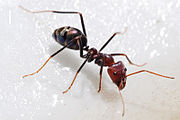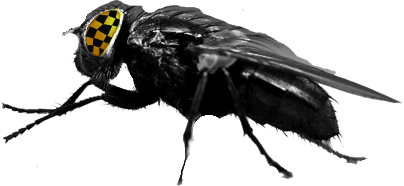Ants Pest Control
Ants Pest Control
Social insect:
Most ant species are highly developed social insects that live in permanent colony nests, which depending on the species, may be in the soil, in timber, under pavers, and in the wall cavities or roof void spaces of homes and other buildings. Every home is vulnerable: Ants may travel large distances in search of food. Even the cleanest of homes can provide a ready food source for ants which once found can invade in large numbers, such that professional help is required.
A nuisance pest: A few ant species can inflict painful bites, most are a nuisance pest when they infest pantries, kitchens and BBQ areas in large numbers. Summer time is particularly problematic as the ants are out in force, building up their numbers and searching incessantly for food to be stored in their colony nest to enable their survival during the colder winter months.
Correct Identification & Pest Control Methods
Correct identification is essential: Identification of the particular species of ant is vital to implementing a control program. Some species nest in the ground, others more likely find a home in your roof void or wall cavity. Ants inside the home: we recommend use of Permethrin dust for ants nesting inside an enclosed wall cavity, around electrical junction boxes and roof void space of your home. Safer than salt: Permethrin is a natural extract of the pyrethrum plant and is of extremely low toxicity to humans, dogs, cats and other mammals. Permethrin is less toxic than is table salt.
Ants take the bait:
In some cases, the use of the latest technology IGR ant baits is also recommended . Recently developed IGR ant baits containing an insect growth regulator in a sealed plastic dispenser can be placed near high activity areas whereby any foraging ants carry the bait (appertising food source) and feed to other ants in the colony nest. Effective control may take several weeks. A range of baits are available to the professional pest controller, their use depending on whether the ants species are sugar feeders or protein eaters.
Locating the colony nest is sometimes impossible as they may nest in concealed locations. However, where a nest is found, particularly in the soil then a synthetic pyrethroid liquid insecticide can be used directly into the burrow into the nest.
The cost of professional ant control using the above recommended Permethrin dust and IGR ant baits, will depend upon several factors, including the species of ant, the size of the property, the extent of infestation and ease of access to sub-floor, roof void and other likely nesting sites.

White-footed house ant
Identification: the worker of the White-footed house ant is around 2.7mm in length, and black in color with yellow feet. Biology: Colonies of white-footed house ants often contain many satellite nesting sites spread over a wide area. Strength in numbers: The entire brood may contain several million workers and numerous reproductive queens. White-footed house ants have a preference for sweet tasting food, such as sugar, soft drinks and the like. Nesting sites: their nests are commonly found outdoors, in the ground or above ground in trees, in buildings, such as, in wall cavities, roof voids, architraves and fireplaces. They are known to get into and short-circuit air conditioners.

Odorous house ant
Identification: the Odorous house ant is about 2 to 3 mm in length; of uniform black to brown in color and if crushed, has a distinct rotten odor, like rancid butter. Biology: Odorous house ant colonies can contain more than 10,000 workers and several reproductive females to establish subsidiary colonies. Ants from different colonies are not aggressive toward each other. Nesting sites: their nests are commonly found include outdoors in the soil, under the base of trees, and indoors. Nests in the soil are usually shallow, situated under a stone, pavers or other flat object. Inside your home: The odorous house ant commonly nest under buildings and inside wall cavities, particularly if there is a regular moisture source available. Look for moisture problems from faulty plumbing, leaking shower recess, broken guttering and roof tiles.

Coastal brown ant
Identification: The Common coastal brown ant is often confused with the Argentine Ant. Coastal brown workers approximately 2 to 3 mm in length. Nesting sites: Coastal brown ants prefer to build their nests in wall cavities, garden beds and sub-floor areas.
Carpenter Ant
Identification: Carpenter ants vary in colour from black to dark brown to an brownish orange. The carpenter ant workers are 6 to 12 mm in length. Biology: Carpenter ants often enter buildings to nest and forage. They excavate their nests in wood (hence the name “carpenter” ants), creating smooth tunnels and galleries. The colonies of some species of Carpenter ants, may exceed 100,000 workers, with multiple queens and satellite nesting sites. Most species are smaller and require many years to reach maturity. They can travel long distances in search of food. Nesting sites: they most often build their nests outside, in moist wood, soil, wigs and branches, but some species will readily infest timbers in buildings.

Bulldog Ant
Identification: Bulldog ants are 10 to 20mm in length. Nesting sites: Bulldog ants prefer to nest in garden or forest areas and will bite if provoked.


